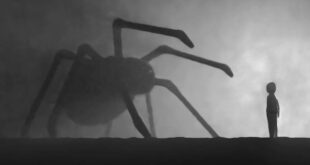Even if science wasn’t your favorite subject in school, it’s hard not to be amazed by some amazing science facts. Seriously, just think about how amazing our world truly is. No matter how much we think know, the truth is, we only know a small fraction of everything that is happening around is. So today, we have gathered a list of interesting and completely weird facts that scientists have uncovered so far. Without further ado, here are 10 fascinating science facts that are strangely true.
1. Oxygen has a color.

As a gas, oxygen is odorless and colorless. In its liquid and solid forms, however, it looks pale blue. Talking about oxygen, did you also know that most of the Earth’s oxygen is produced by the oceans? According to the National Oceanic Service, plant-based marine organisms are responsible for most of the fresh air we breathe in. Plankton, seaweed, and other photosynthesizers (any organism that uses photosynthesis to generate carbohydrates) produce more than half of the world’s oxygen.
2. Hot water freezes faster than cold water.

While it’s strangely hard to believe, it is true that under right scientific conditions, hot water freezes faster than cold water. The answer, as described in a 2017 paper in Physical Review Letters by Antonio Lasanta of Charles III University Madrid and colleagues, depends on the speed of individual water particles as they scatter in all directions like ants in a nest.
When conditions are just right – if the hot beaker is the right amount hotter than the cold beaker and its molecules are wayward enough to generate high kurtosis – the model simulation shows that the hotter sample will cool faster than the colder one.
3. You can make balls fly through air as it falls.

If you spin a ball when you drop it, it will fly through the air as it falls. This is called the Magnus effect and is the reason why soccer players are able to bend a soccer ball into the goal around a 5-person wall.
4. Solar flares are actually extremely powerful.

According to NASA, solar flares are classified based on their strength. While C-class and smaller flares are too weak to noticeably affect Earth, M-class flares can cause brief radio blackouts at the poles. Then there are X-class flares that can can create long lasting radiation storms that can damage satellites, communications systems, and even ground-based technologies and power grids. NASA, NOAA, the US Air Force Weather Agency and other agencies keep a constant watch on the sun to monitor for X-class flares and their associated magnetic storms.
5. It’s impossible to burp in space.

On Earth, when we burp, gravity assists our bodies to keep all the solids and liquids down while only the gas escapes from our mouth. In space, in the absence of gravity, there’s no way for the gas, solids and liquids to separate so if we burp, we are going to be burping it all out at once.
6. We have no idea what most of the universe looks like.

The stars visible in our night sky are mostly within 10,000 light-years but the light from the nearest galaxy takes about 3 million years to reach Earth. About 96% of the universe however, is made up of dark matter and dark energy, which are undetectable to humans. Scientists believe that these particles that make up these substances don’t interact with regular matter or light, making it impossible to see them.
7. About half of your body is bacteria.

According to a 2014 study, the human body consists of 39 trillion bacteria and 30 trillion human cells.
8. Water can exist in three states at once.

Under very specific conditions, water can exists as a gas, a liquid and a solid simultaneously. This is called the Triple Boil and is extremely hard to achieve so don’t even bother trying at home.
9. Pigeons are capable of recognizing good paintings.

According to one Japanese study, pigeons are capable of differentiating between “good” and “bad” paintings. Scientists believe that the birds use color, texture, and pattern cues just like us humans, to decide whether the painting is good or not.
10. It can rain diamonds on some planets.

According to scientists, it rains diamonds on Neptune, Uranus, Jupiter and Saturn. The atmospheres in all four planets have such extreme pressure that they can crystalize carbon atoms and turn them into diamonds by the time they reach the ground. At the same time, a different group of researchers speculate that it may rain as much as 2.2 million pounds of diamonds on parts of Saturn every year.




